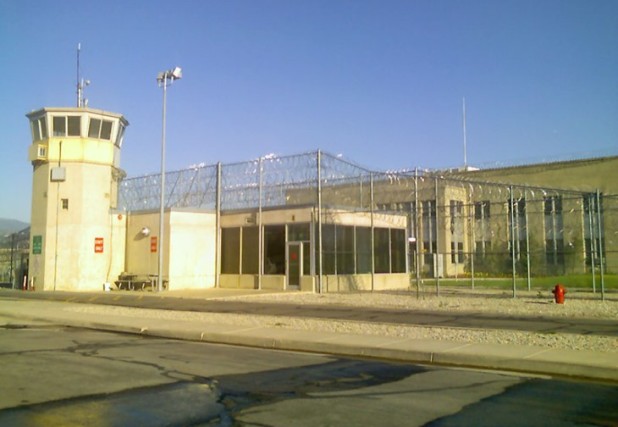The New Oberserver
March 4, 2016
Nonwhites—blacks and Hispanics—account for 64 percent of the US prison population, even though they account for 37 percent of the total population—and they account for 75 percent of all prisoners in federal penitentiaries.
The figures all use the loose federal government’s definition of race, which routinely classifies Hispanics as “white,” and the actual figures could be even more distorted than the reported statistics.
The issue of nonwhite imprisonment rates was highlighted last week with an article in the Washington Post, titled “America has locked up so many black people it has warped our sense of reality.”
The Washington Post article is, typically, focused on complaining about the “effect” of having so many nonwhites locked up, rather than addressing the cause, but it does nonetheless reveal a number of important points, namely:
There are around 1.6 million incarcerated prisoners in state or federal prisons.
This figure excludes prisoners in local jails, which could skew the statistics even more.
Some 7.7 percent of black males aged 25 to 54 years are incarcerated at any one time.
This compares to 1.6 percent of white males of the same age who are incarcerated at any one time.
Over the past 40 years, the prison population has quintupled.
Black men are imprisoned at six times the rate of white men.
In 2003, the Bureau of Justice Statistics estimated that black men have a one in three chance of going to federal or state prison in their lifetimes.
According to Census data from 2014, there are more young black high school dropouts in prison than have jobs.
One in nine black children has had a parent behind bars.
One in thirteen black adults can’t vote because of their criminal records.
The Census’s Current Population Survey also lists the number of societal “drop-outs” who were “institutionalized in 2014.” This usually means jailed, but can also mean incarceration in a mental hospital or a nursing home. For whites, the figure is 7.6 percent, and for blacks it is 29 percent.
The Washington Post article added that the “prison boom has made such a dent that recently, social scientists have completely reconsidered how much progress the black community has made in recent decades,” adding that the “growth of incarceration rates among black men in recent decades combined with the sharp drop in black employment rates during the Great Recession have left most black men in a position relative to white men that is really no better than the position they occupied only a few years after the Civil Rights Act of 1965.”
The government’s own latest figures are contained in the US Department of Justice’s September 2014 report, “Prisoners in 2013.”
According to that report, non-Hispanic blacks (37 percent) comprised the largest portion of male inmates under state or federal jurisdiction in 2013, compared to non-Hispanic whites (32 percent) and Hispanics (22 percent).
The report points out that it uses “race and Hispanic origin distributions from its 2004 Survey of Inmates in State and Federal Correctional Facilities to adjust the administrative data from NPS to reflect self-identification of race and Hispanic origin by prisoners”—in other words, anyone who claims to be “white” can do so, and is automatically included in that racial group’s statistics.
Using that flawed definition, the Department of Justice (DOJ) report goes on to say that almost 3 percent of black male US residents of all ages were imprisoned on December 31, 2013 (2,805 inmates per 100,000 black male US residents), compared to 1 percent of Hispanic males (1,134 per 100,000) and 0.5 percent of white males (466 per 100,000).
The DOJ says that black males had higher imprisonment rates across all age groups than all other races and Hispanic males. In the age range with the highest imprisonment rates for males (ages 25 to 39), black males were imprisoned at rates at least 2.5 times greater than Hispanic males and 6 times greater than white males.
For males ages 18 to 19—the age range with the greatest difference in imprisonment rates between whites and blacks—black males (1,092 inmates per 100,000 black males) were more than 9 times more likely to be imprisoned than white males (115 inmates per 100,000 white males).
The difference between black and white female inmates of the same age was smaller, but still substantial. Black females ages 18 to 19 (33 inmates per 100,000) were almost 5 times more likely to be imprisoned than white females (7 inmates per 100,000).
In federal prisons—those institutions which hold offenders for serious federal crimes such as banking and insurance fraud, counterfeit, embezzlement, burglary, larceny, property offenses, continuing criminal enterprise, drug offenses, extortion, fraud, bribery, homicide, aggravated assault, kidnapping, immigration and national security offenses, robbery, sex offenses, and weapons, explosives, and arson crimes—the race gap is even greater.
According to official figures released by the Federal Bureau of Prisons, there are currently 195,728 inmates in federal prisons. Drug offenders are the highest number (85,569), followed by weapons, explosives, and arson (31,092), immigration (16,833), sex offenses (14,322) and extortion, fraud, and bribery (12,016).
Broken down by inmate race, the DOJ claims that the inmates are 58.7 percent “white” (or 114,577 individuals), 37.8 percent black (73,684), 1.5 percent Asian (2,937), and 2 percent Native American (3,903). They do not have a category for “Hispanics” by race.
However, when the DOJ breaks this down by “ethnicity,” it is revealed that “Hispanics” account for 65,713 prisoners. Deducted from the “white” figure, this reveals that there are 48,864 “non-Hispanic whites” in federal prisons—or 24 percent of the total.
This means, of course, that at least 75 percent—and likely more, given the “racial self-classification” process used by the government—of all federal prison inmates are nonwhite.

